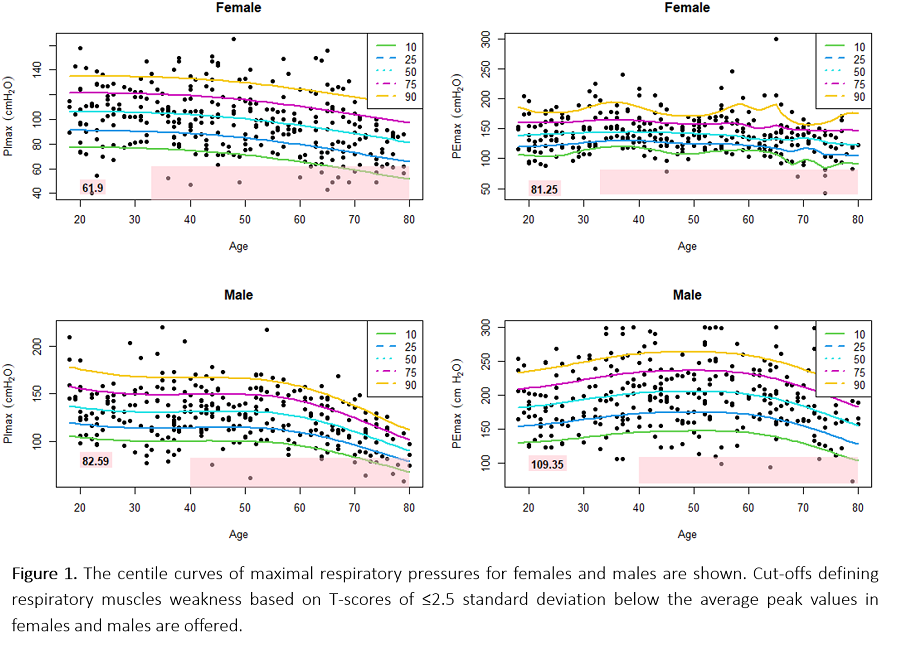Abstract
Introduction
A clear definition of respiratory muscle weakness based on maximal respiratory pressures (MRP) values is currently not available.
Aims
To establish the lower limit of normality (LLN) for maximal inspiratory and expiratory pressures (PImax/PEmax) by using T-scores to define respiratory muscle weakness.
Methos
A multicentre cross-sectional study was conducted in 14 Spanish centres. Healthy non-smoking volunteers 18-80 years old were recruited and stratified by sex and decades. MRP were measured using a digital manometer and a flanged mouthpiece. Cut-offs for MRP were established by T-scores, following a novel method used in sarcopenia to define weak grip strength (Dodds et al., 2014). Interval of ages with maximum average values of MRP were calculated and ?2.5SD below those were considered to represent respiratory muscle weakness.
Results
The sample was composed of 610 subjects (48±17 years, 314 females). Cut-offs defining respiratory muscles weakness based on T-scores?2.5 SD below the average peak values (achieved at 30-43 years) were: in females 62cmH2O for PImax and 81cmH2O for PEmax; in males were 83cmH2O for PImax and 109cmH2O for PEmax 
Conclusions
These cut-offs will allow to better interpreted MRP in clinical practise. They will be useful worldwide to identify respiratory muscle weakness and to selected candidates for respiratory muscle training programs.